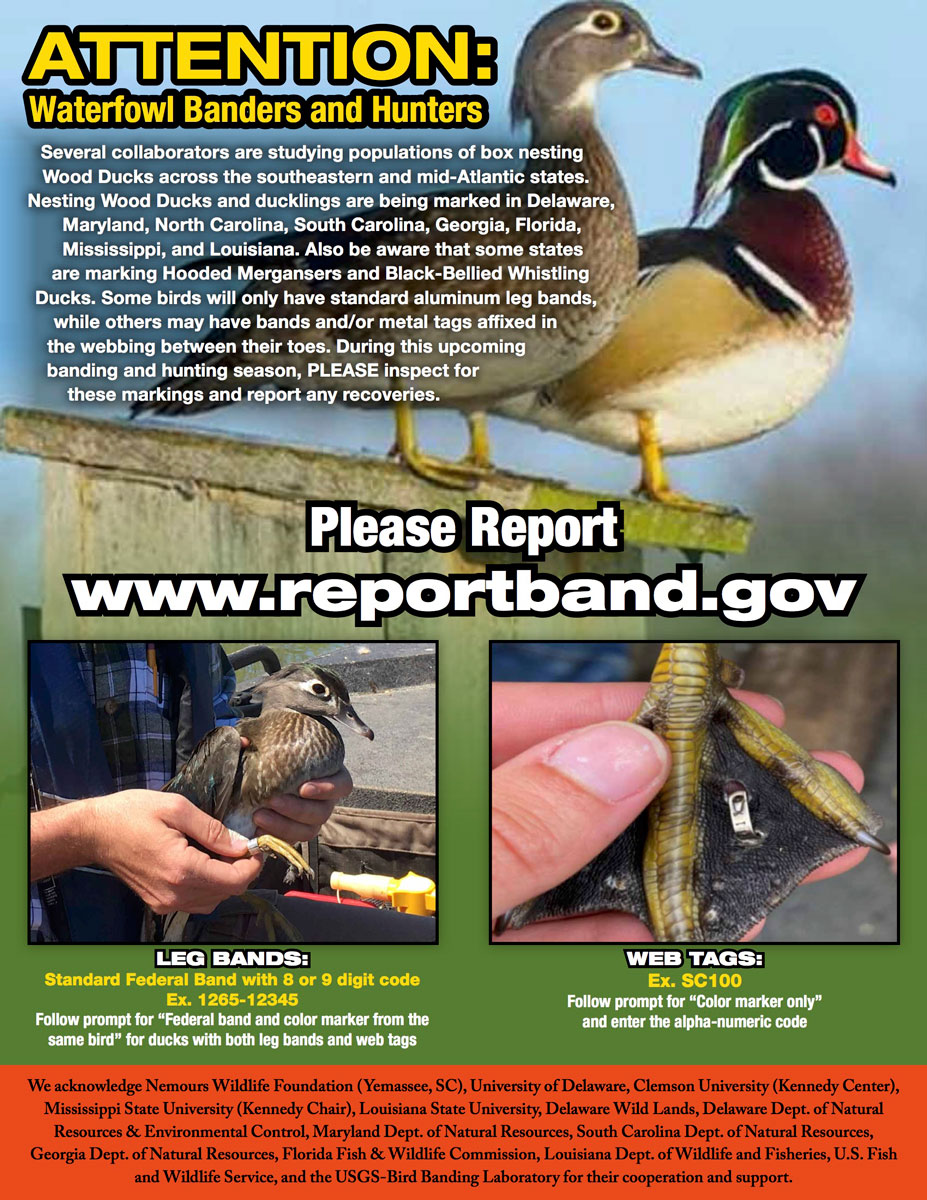
The Louisiana Department of Wildlife and Fisheries (LDWF), the LSU School of Renewable Natural Resources and several other partners are conducting a study of box nesting wood ducks across the southeastern and mid-Atlantic states, including Louisiana.
The study is being conducted to evaluate reproduction from wood duck nest boxes maintained by LDWF, assess habitat characteristics that affect reproduction and estimate recruitment of nesting females into the box-nesting population of wood ducks.
Nesting female wood ducks captured during nest-box checks are banded with standard aluminum leg bands. Ducklings have small metal tags affixed in the webbing between their toes so they may be identified during pre-season banding efforts or after harvest by hunters.
 LSU research crews also are implanting passive integrated transponder (PIT) tags under the skin between the shoulders of wood duck ducklings. PIT tags are retained at a higher rate than web-tags and can be read by a specialized scanner to identify individuals captured during banding efforts or returning to nest-boxes in subsequent years. More than 500 ducklings have been marked with web-tags and more than 500 have implanted PIT tags.
LSU research crews also are implanting passive integrated transponder (PIT) tags under the skin between the shoulders of wood duck ducklings. PIT tags are retained at a higher rate than web-tags and can be read by a specialized scanner to identify individuals captured during banding efforts or returning to nest-boxes in subsequent years. More than 500 ducklings have been marked with web-tags and more than 500 have implanted PIT tags.
With that in mind, LDWF and LSU would like to ask duck banders and the public, including hunters, to look for and report web-tags as well as bands on any recaptured or harvested wood ducks. Further, successful wood duck hunters should be aware of the remote possibility of finding a PIT tag when preparing a bird for consumption.
To report these bands or tags, go to www.reportband.gov.


